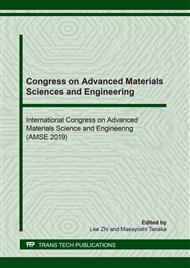p.105
p.110
p.116
p.125
p.132
p.141
p.147
p.153
p.159
Operationally Ready Advancements in Oil Free Corrosion Control for Advanced Materials
Abstract:
Operationally ready is a key component to effective management of equipment, spares and systems through manufacturing, shipment and transport, meaning that products are impacted by how they stored, shipped and staged. That means no rust, no degradation and the ability to utilize the equipment or parts quickly, with no cleaning or additional work required. Significant advancements have been made in oil free, volatile free anti-corrosion protection to aid this. These advancements are in the form of plastics, laminates, canvas, woven products and shrink films that can be used to provide long term stable packaging that can be used both as short term, one-time use, multiple use applications or even used to create portable storage shelters. These materials will also help stabilize and help protect metals as well as non-metallic components and materials such as items that can swell, gaskets, fabric and rubber components, against degradation – this is critical since many systems are combination of materials, no longer just single material construction. These developments in oil free, volatile free packaging have been successfully incorporated into automotive applications with short term and long-term protection being available from the same packaging. Additionally, information on accelerated testing on already environmentally stressed items will be reviewed and solutions presented to their protection schemes as well.
Info:
Periodical:
Pages:
153-158
Citation:
Online since:
May 2020
Authors:
Keywords:
Price:
Сopyright:
© 2020 Trans Tech Publications Ltd. All Rights Reserved
Share:
Citation:


